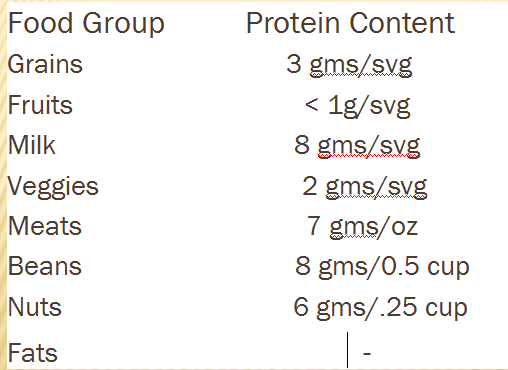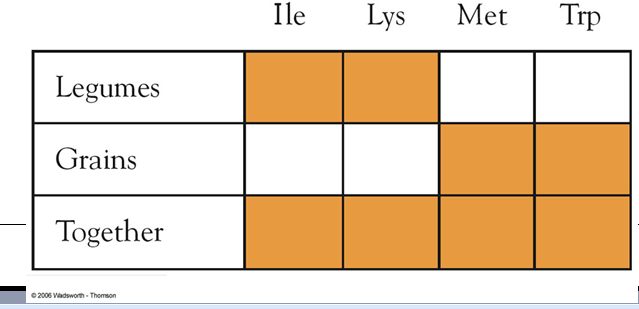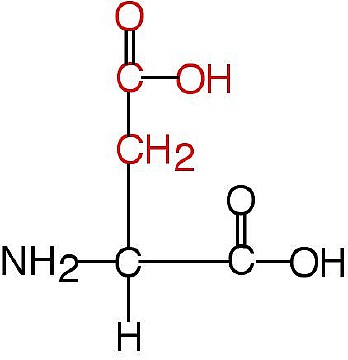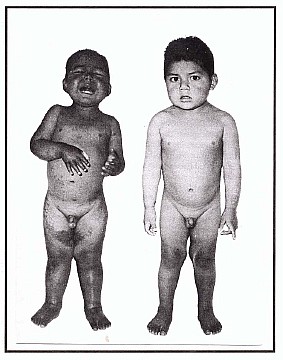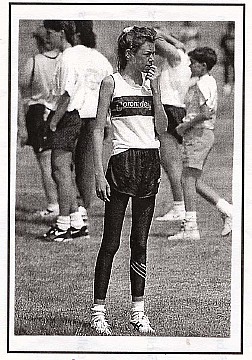Once amino acids join together to form a polypeptide, then the protein strand coils and folds based on how the amino acids in the strand attract and repel one another. Here is an illustration of that:

An important concept with proteins is that SHAPE determines FUNCTION. When the wrong amino acids are bonded together when synthesizing proteins, the result is a different shaped protein, that does not function like it should. An example of this is Sickle Cell Anemia (which is a genetic disorder). Below is a picture of hemoglobin, which is globular in shape and when packed in red blood cells to deliver oxygen, it gives red blood cells a donut shape.
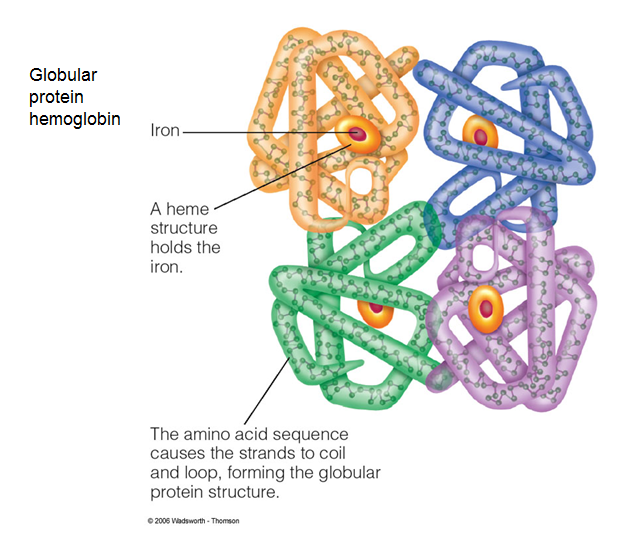
With Sickle Cell Anemia, DNA gives cells the incorrect message when bonding amino acids together to make hemoglobin.

The result is a crescent shaped red blood cell, that is sticky and does not transport oxygen like the non-sickle red blood cells.
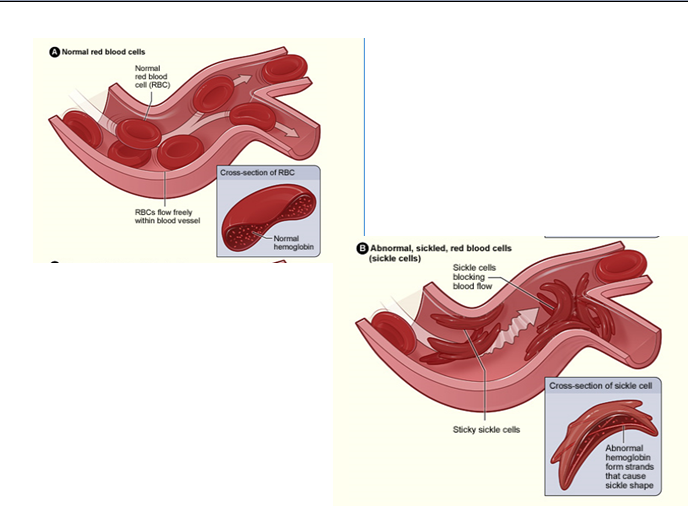
This is the result of a different shaped protein!
III Functions of Proteins
As your text states, "proteins are amazing, versatile, and vital cellular working molecules. Without them, life would not exist".
Proteins function as both structural and working proteins. Structural proteins tend to be long and fibrous in nature, and working proteins tend to be globular in shape.
Structurally proteins make up hair, skin, nails, bone, connective tissue, muscle and other vital organs.
Working proteins include:
-
Hormones like insulin and glucagon
-
Enzymes like lactase, and maltase
-
Transport proteins like lipoproteins (remember these help transport fat and cholesterol), cellular pumps, and hemoglobin (as discussed above hemoglobin transports oxygen). If you are interested, here is an animation that shows "The Sodium-Potassium Pump."
-
Plasma proteins help regulate fluid balance in the blood, and prevent edema.
-
Antibodies to help fight infection.
-
Protein can be used as an energy source, but carbohydrate and fat are preferred fuel sources.
The important way the muscles help provide energy for the brain is by having their amino acids rearranged to become glucose for the brain. Our brain canNOT use fat for energy, at least not in any significant amount.
Below is a short video illustrating a few of the functions discussed above.
Here is a link to the above video: http://youtu.be/izwgt1C8Kus
How does our body get these structural and working proteins? Our body makes them. Amino acids which are the building blocks for these proteins come from the diet, recycled amino acids within the body, or our body synthesizes non-essential amino acids.
